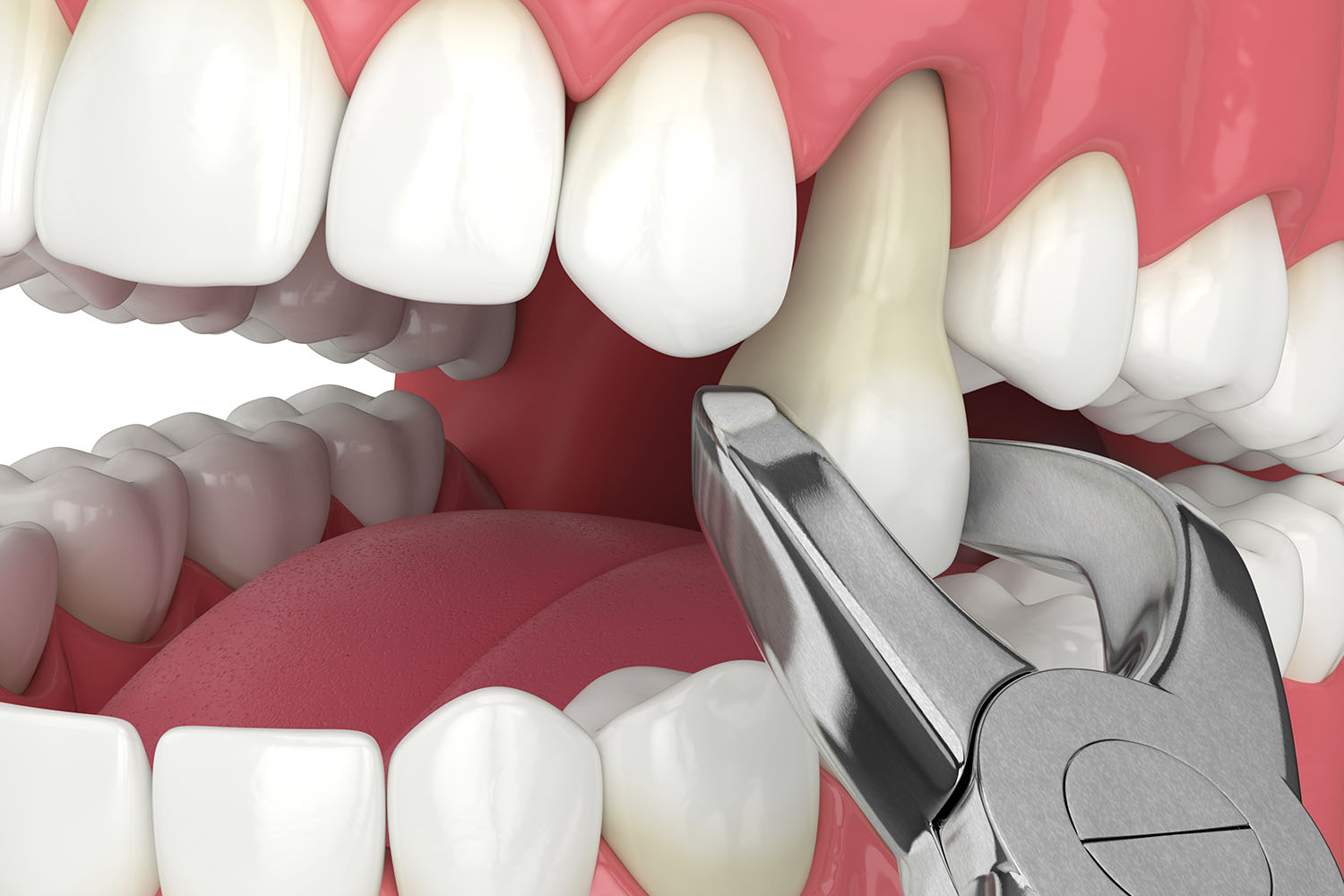Overview
Tooth extraction is a dental procedure that involves removing a tooth from its socket in the jawbone. While it may sound daunting, advancements in dentistry have made this process relatively routine and safe. In this blog, we’ll delve into the intricacies of tooth extraction, backed by research and facts, to shed light on what to expect before, during, and after the procedure.

Understanding Tooth Extraction:
There are various reasons why a tooth may need to be extracted. Common reasons include severe decay, advanced gum disease, crowding, trauma, or impaction (when a tooth is unable to emerge fully through the gum). Your dentist or oral surgeon will evaluate your situation and recommend extraction if deemed necessary.
The Tooth Extraction Procedure:
Before the extraction, your dentist will administer local anesthesia to numb the area around the tooth. In some cases, sedation may also be used to help you relax during the procedure. Once the area is numb, the dentist will use specialized tools to loosen the tooth from its socket and carefully remove it. In more complex cases, such as impacted wisdom teeth, a surgical extraction may be required, which involves making an incision in the gum and possibly removing bone tissue to access the tooth.
Research and Facts:
Studies have shown that tooth extraction is generally a safe and effective procedure when performed by trained professionals. Complications are rare but can include infection, nerve damage, and excessive bleeding. However, these risks are minimized through proper technique and post-operative care.
Recovery Process:
After the extraction, it’s normal to experience some discomfort and swelling, which can be managed with over-the-counter pain medication and cold compresses. Your dentist will provide specific instructions for caring for the extraction site, such as avoiding strenuous activity, eating soft foods, and gently rinsing your mouth with saltwater.
It’s essential to follow these instructions diligently to promote healing and prevent complications. In most cases, the extraction site will heal within a few days to a week, although complete bone and soft tissue regeneration may take several weeks.
Tooth extraction is a common dental procedure that can alleviate pain and prevent further oral health problems. By understanding the process, risks, and recovery involved, you can approach it with confidence and ensure a smooth experience. Remember to consult with your dentist if you have any concerns or questions about tooth extraction or any other dental procedures.
Incorporating research and facts into this blog provides valuable insights into the tooth extraction process, empowering readers to make informed decisions about their dental health. Whether you’re facing a tooth extraction yourself or simply curious about the procedure, knowledge is key to a positive outcome.


